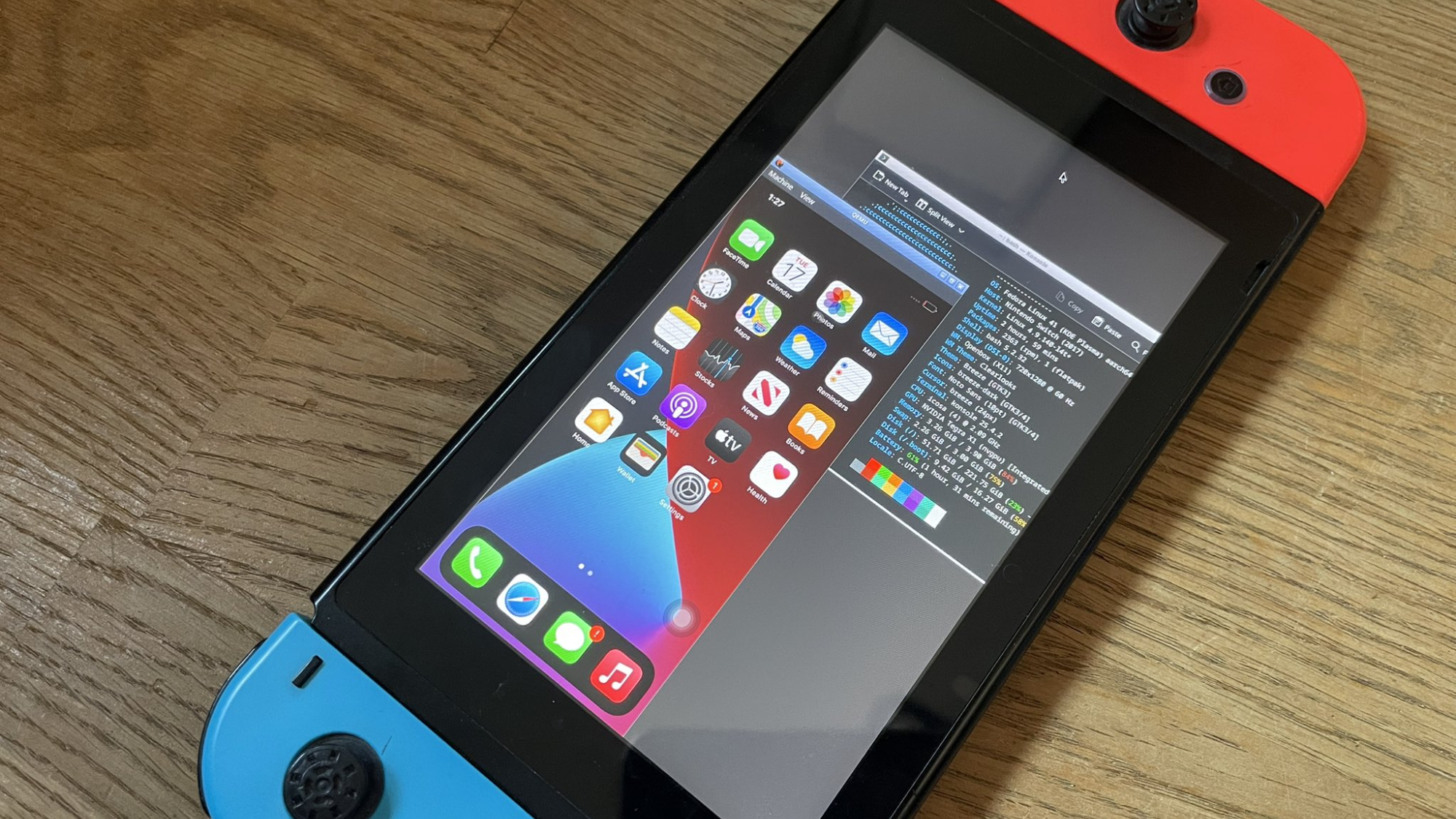Somebody turned a Nintendo Switch into the world's slowest iPhone, and the results were a disaster — boasts 20-minute boot times, kernel panics, and no working apps

A high-tech tinkerer has managed to get Apple’s iOS to run on the Nintendo Switch. Don’t get too excited, though, as PatRyk on X wryly admits they have created “the world’s slowest ‘iPhone’.” Booting this Nintendo ‘iPhone’ currently takes 20 minutes, and all the apps they tried crash – but it’s a start.
Baby steps
While the gaming tech world is all a flutter with the recently launched Switch 2, PatRyk spent two days attempting to shoehorn Apple’s mobile OS onto the best-selling hybrid console. This enthusiast’s modesty seems to be matched by their patience, as the new Nintendo ‘iPhone’ takes 20 minutes to boot. We wonder how many times they waited that length of time, or even longer, for the boot process to hang or otherwise fail?
Using the mobile OS also sounds like an incredible life-sapping chore, with this ‘iPhone’ in its current state. PatRyk says that the system “kernel panics every 2nd thing you do, can’t open any apps (they all time out and crash).”
I’ve lost my mind (and 2 days of my life to install this)Behold: the world’s slowest “iPhone” 🎉🎉Takes over 20 minutes to boot, kernel panics every 2nd thing you do, can’t open any apps (they all time out and crash) 🚀🚀 pic.twitter.com/r3B3JPDUDVJune 17, 2025
At this stage, the project might sound dire, but it shows that running iOS on the original Switch is possible – it just needs optimization. But you aren’t going to be ditching your real Apple iPhone for a Switch any time soon.
Underlying technology - the versatile QEMU
PatRyk reveals that their Nintendo ‘iPhone’ project was only possible thanks to a version of QEMU created for the Apple iPhone 11 by ChefKissInc. QEMUAppleSilicon is a version of the open-source machine emulator and virtualizer tailored for emulating Apple Silicon devices, as per its name.
Over two days of mind-numbing hacking, PatRyk wrangled this GitHub code and the heavily locked-down Apple iOS. Eventually, the tinkering tour de force paid dividends, as PatRyk managed to coax iOS on Nintendo Switch to get out of bed and wash its face on a completely alien system powered by the Nvidia Tegra X1.
To wrap up, PatRyk doesn’t indicate whether more hours or days will be devoted to this crazy sounding project. But they say to their followers that they will be back to share further adventures in code, more frequently, so stay tuned.
Get Tom's Hardware's best news and in-depth reviews, straight to your inbox.
Follow Tom's Hardware on Google News to get our up-to-date news, analysis, and reviews in your feeds. Make sure to click the Follow button.

Mark Tyson is a news editor at Tom's Hardware. He enjoys covering the full breadth of PC tech; from business and semiconductor design to products approaching the edge of reason.